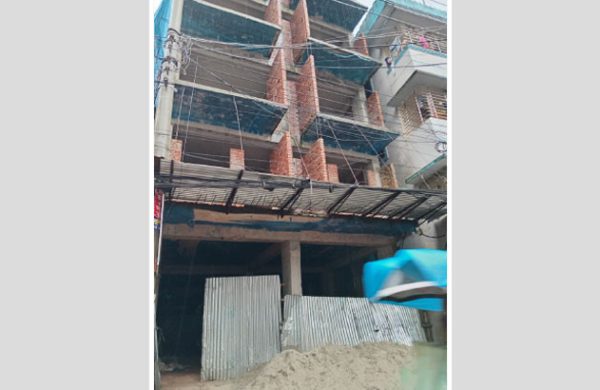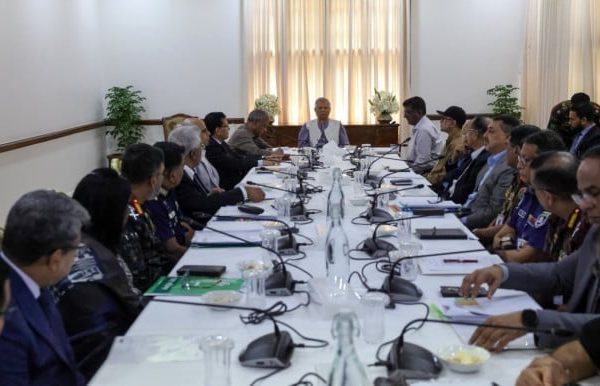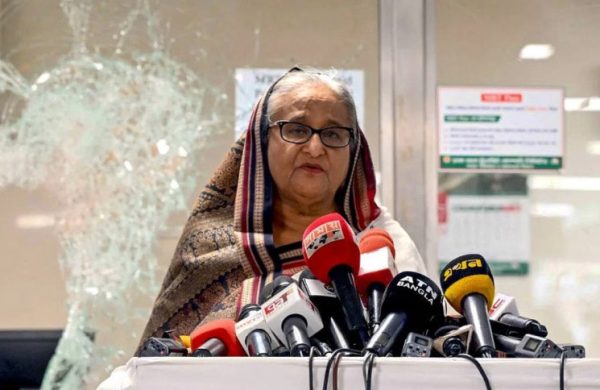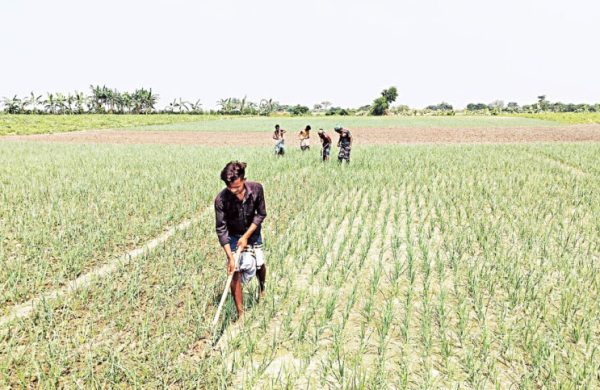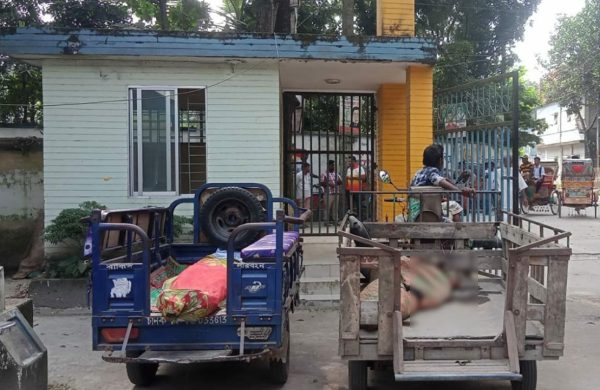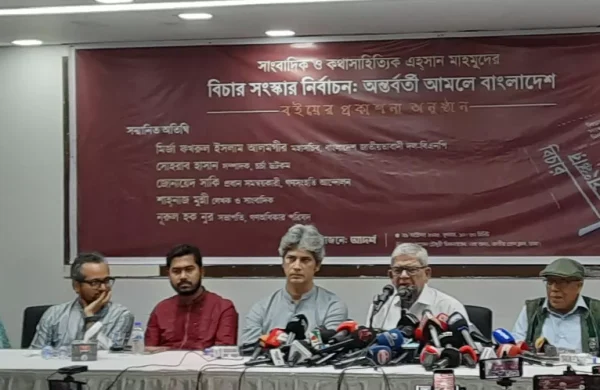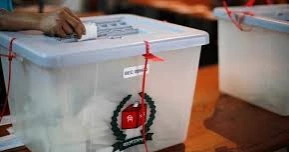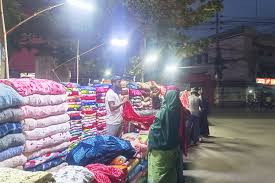Railway hit by engine crisis
- Update Time : Sunday, September 7, 2025

TDS Desk:
The scheduled departure time of the Chattala Express, an intercity train running on the Dhaka–Chattogram route, from Kamalapur Station is 2:15 pm But its engine broke down after arriving in Dhaka from Chattogram on 16 August.
There was no alternative engine available at Kamalapur Station. In the meantime, a container train was heading from Kamalapur to Chattogram. After reaching Narsingdi, the freight train was stopped, and its engine was brought back to Dhaka. Later, Chattala Express left for Chattogram around 6:00 pm.
Railway sources said the Chattala Express reached Chattogram carrying passengers with a delay of nearly three hours and forty-five minutes. A shortage of engines leads to cancelation of multiple passenger and freight train operations every day.
In June alone, operation of 435 trains—including local, mail, commuter, and freight trains—were cancelled in the eastern region of the railway. More than 1,000 containers are stuck at the Chattogram Port terminal. These containers cannot be transported due to the lack of engines.
As a result of this crisis, the railway eastern region’s revenue from freight transport has decreased by Tk 550 million (55 crore) in a year. Railway sources said if this continues, intercity train services will also have to be cancelled in the next two to three months. Passenger revenue will drop, and sufferings will increase.
Railway authorities said it is difficult to manage the situation by purchasing new engines. At present, there is no new project for engine procurement. Under the Chattogram–Dohazari new railway line construction project, 30 meter-gauge engines are supposed to be purchased, but the project is still in its early stage. In the past year, tenders for purchasing spare parts were not completed on time. As a result, repairs of old engines are not being done properly.
Every two to three months, a monthly operational review meeting led by the Director General of Bangladesh Railway is held. Senior officials associated with train operations attend the meeting.
Issues such as ensuring timely train operations, increasing railway revenue, and the availability of engines and coaches are discussed in detail.
Officials concerned said there is currently a severe shortage of meter-gauge engines in the railway. Meter-gauge trains operate in Dhaka, Chattogram, and Sylhet. In addition, meter-gauge trains run in northern districts like Bogura, Natore, Lalmonirhat, Dinajpur, and Panchagarh. Broad-gauge trains operate in Khulna and Rajshahi regions.
In the railway’s monthly operational meeting, it was discussed that some engines break down again shortly after being repaired at the central locomotive factory.
A senior official of the mechanical department told on Journalist that if an engine fails again after repair, it means the proper parts were not used, or the expenditure was wasted. He said even engines bought within the last three to four years are breaking down.
Muhammad Fuozul Kabir Khan, adviser to the Ministry of Railways, told Journalist that the engine crisis in the railway is severe. Even if the procurement process begins now, it will take two years for engines to arrive. That is why emphasis is being placed on repairing old engines. However, there are also shortages in the capacity of staff and factories.
FREIGHT TRANSPORT, LOCAL TRAINS ON THE VERGE OF EXTINCTION
On 28 July, Kamal Akhter Hossain, Assistant Chief Operating Superintendent of the eastern region of the railway, sent a requisition letter to the mechanical department. He wrote in the letter that 1,286 containers are lying in Chattogram awaiting transport. But container trains cannot be operated due to the lack of engines. The letter stated that there are currently only two engines in the eastern region for freight transport—one used for container trains and the other for fuel tankers. To clear the backlog, at least 13 freight trains per day would be required.
Khairul Alam, Director of the Bangladesh Shipping Agents Association, told Journalist that the Chattogram Port has the capacity to hold 875 containers. But as the railway is unable to transport as required, more than 1,000 containers are piled up. Currently, only one train is operating, leaving exporters in trouble.
Most freight transport in the railway occurs in the eastern region. Analysis of freight transport data shows that in the 2023–24 fiscal year, the railway earned nearly Tk 1.53 billion (153 crore) from freight transport. In 2024–25 fiscal, this revenue dropped to about Tk 980 million (98 crore). In the last fiscal year, about 1 million metric tonnes of freight was transported. In the previous fiscal year, the figure was about 2 million metric tonnes.
Railway sources said when engines are short; they cancel local, mail, commuter, and freight trains. Intercity trains are not cancelled because passengers protest. In June, 280 train trips were cancelled in Dhaka and surrounding areas, 107 in Chattogram region, and 48 in the northern region.
According to railway figures, in FY 2023–24, 91 per cent of intercity trains in the eastern region ran on time. This time, it has dropped to 89 per cent. In the western region, about 90 per cent of intercity trains ran on time in the last fiscal year, compared to 88 per cent the year before. In other words, on-time performance has improved for broad-gauge trains in the western region.
NEW ENGINES BREAKING DOWN TOO
According to railway figures, from June 2023 to June 2024, 46 engines were repaired at the central locomotive factory in Pahartali and brought back into service. Among them, engine no. 2922 broke down last month while carrying the Bijoy Express from Jamalpur to Chattogram. Engine no. 2315 had to be taken to the repair factory twice in one year. When an engine breaks down en route, another engine has to be brought from the nearest junction, which takes three to four hours.
Recently, the Sagarika Commuter Train was traveling from Chandpur to Chattogram. After covering some distance, its engine broke down. There was no alternative engine at the nearby Laksam Junction. An engine had to be sent from Chattogram, which arrived at 9:00 p.m. Only then did the train leave for Chattogram. At that time, passengers reportedly tried to assault railway staff.
Railway sources said around 2012, more than 300 passenger trains used to run, but now the number has dropped to 228. Many of these remain suspended when engines break down.
At the time of Bangladesh’s independence, the railway fleet had 486 engines. That number has now dropped to 306. Of these, 60 per cent have exceeded their 20-year service life. Among the current 306 engines, 11 have long been out of order and cannot be repaired. Of the remaining 295, about 28–30 per cent are alternately under repair. Effectively, only about 200 engines are available for regular use. This fiscal year, 96 types of spare parts are required for the repair of 12 engines. The railway currently does not have them.
During the Awami League’s 15 and a half years in power, about Tk 1 trillion (1 lakh crore) has been spent on railway development. Most of this was spent on constructing new railway lines. In this time, 70 new engines were purchased, and India donated 30 old engines. As a result, while the rail network has expanded, the number of operating trains has declined.
REVENUE DROPS
For the 2024–25 fiscal, the railway had set a target of earning Tk 15.65 billion (1,565 crore) from passenger and freight transport. But in the last fiscal year, revenue was Tk 10.76 billion (1,076 crore), about Tk 5 billion (500 crore) short of the target. Apart from this, the railway also earns from land leases and other sources.
Altogether, revenue stood at Tk 18.46 billion (1,846 crore) last fiscal year, against a target of Tk 27.25 billion (2,725 crore). In FY 2023–24, total revenue was Tk 19.25 billion (1,925 crore), down Tk 790 million (79 crore) from the previous year.
Railway officials said the railway had been spending Tk 2.50 for every Tk 1 of income. Last fiscal year, expenses were reduced to Tk 2.09 per Tk 1 of income. A senior railway official told Journalist that after the interim government took over, spending was tightened. Some wastage was also reduced. Had revenue increased at the same time, it would have been better. In other words, expenses have been curtailed, but revenue has not risen.
Railway’s losses are increasing. In the 2009–10 fiscal, when the Awami League came to power, the annual loss of the railway was Tk 6/91 billion (691 crore). After that, the government launched massive investments in new railway line projects. Fares were also raised. Yet losses continued to mount. In the 2022–23 fiscal, railway revenue was Tk 17.83 billion (1,783 crore), but expenditure was Tk 33.07 billion (3,307 crore), leaving a loss of Tk 15.24 billion (1,524 crore).
Expressing surprise at the decision to suspend local and freight trains due to the engine crisis, transport expert and BUET professor Shamsul Haque said there is uncertainty about whether passenger trains will earn enough from fares.
A large workforce is also required at each station for boarding and deboarding passengers. But once a freight train is loaded with containers, its revenue is guaranteed. That is why globally, railways focus on freight transport. Passenger subsidies are provided from this income. But Bangladesh Railway is doing the opposite.
Shamsul Haque further said that many local trains used to bring farmers’ produce from districts such as Mymensingh and Kishoreganj to Dhaka. These too have been stopped. New intercity trains have been launched in ministers’ and politicians’ constituencies. Their cost-benefit analysis should be examined. It should also be investigated why newly purchased engines are breaking down quickly. The railway is heading in a suicidal direction. The massive investments made risk going to waste.


